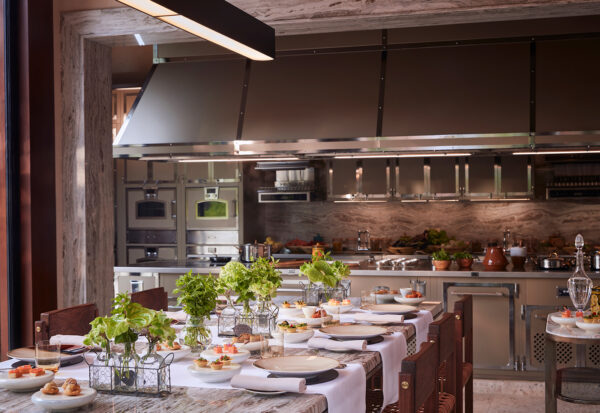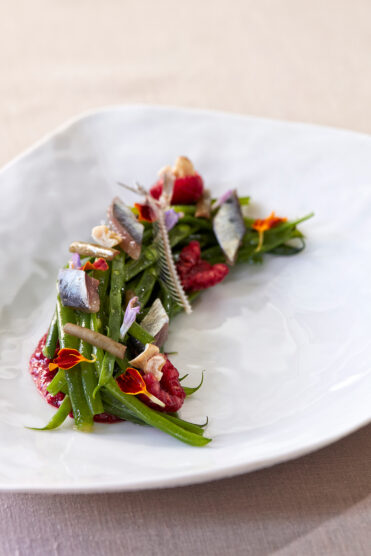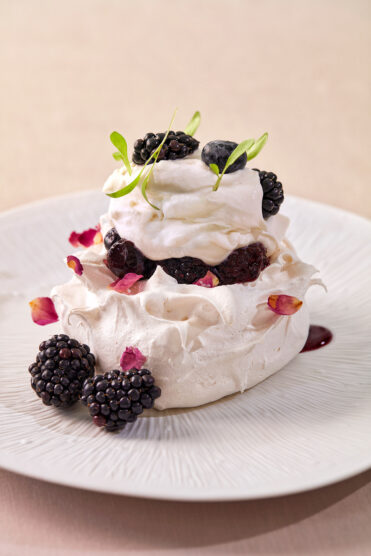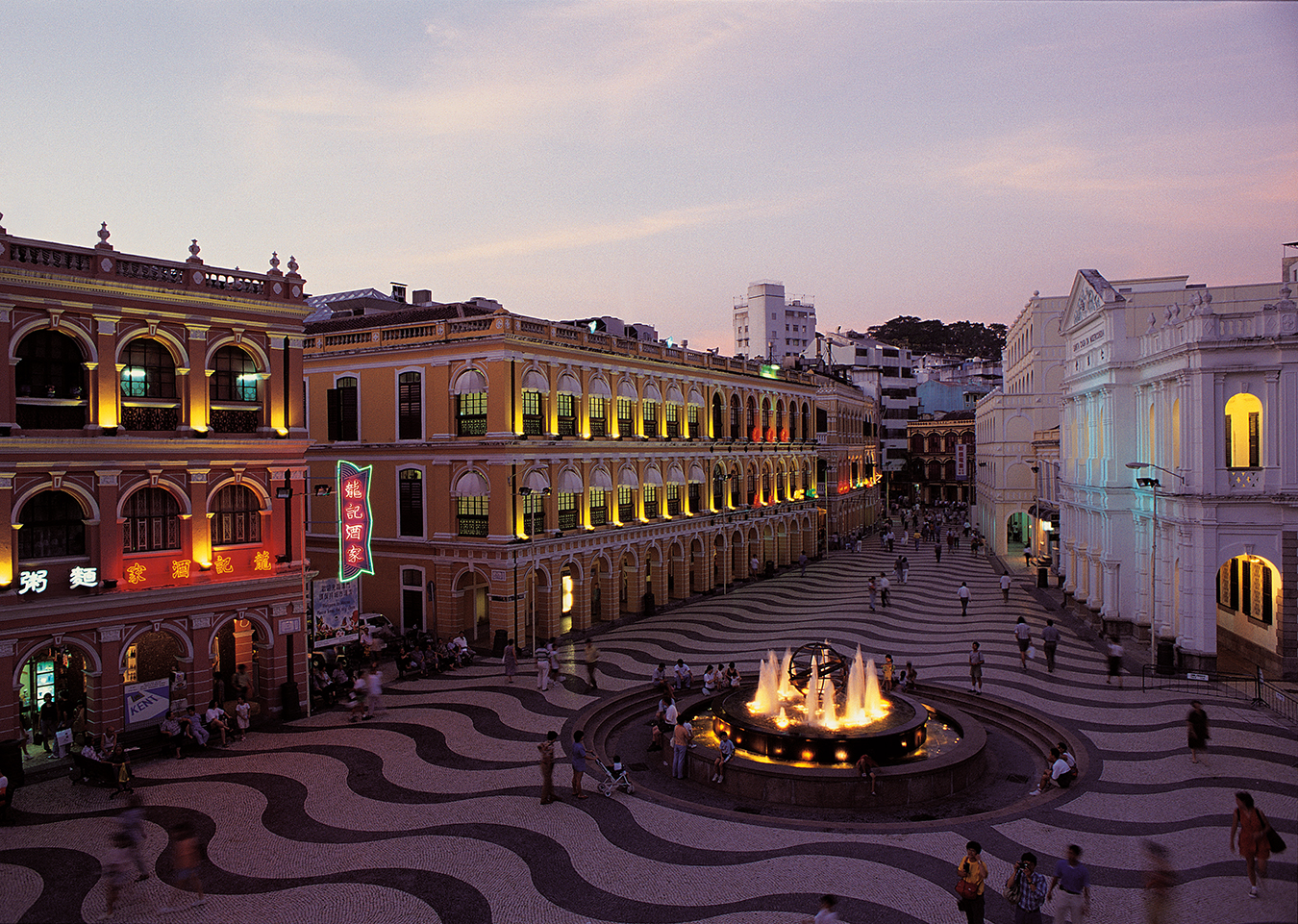
Hélène Darroze Plants Her Flag in Morocco
The Michelin-starred chef takes over the French and Moroccan restaurants at Marrakech’s iconic Royal Mansour.
“This is the kitchen of my dreams,” exclaims Hélène Darroze, conducting a class in the new cooking school at Royal Mansour Marrakech. The celebrated and highly decorated chef has vocalized what each of the eight participants enrolled in this first culinary workshop at the hotel is thinking. The custom kitchen—pearl beige and satin chrome—is the work of Officine Gullo, the Florentine bespoke kitchen maker. Here, on a cooking island that spans many metres, the chef of a fleet of high-powered restaurants with six Michelin stars among them is teaching us how to make cocotte lutée (pot-roasted turbot and clams with white beans). Darroze, who insists we call her Hélène, has been in Morocco with her team, whom she calls her “loyal soldiers,” for the better part of a month, finalizing details for her first project outside Europe.
Royal Mansour Marrakech was commissioned by Morocco’s King Mohammed VI and opened in 2010. A stone’s throw from Jemaa el-Fna, the personal passion project is a palatial property designed to feel like a medina within the city’s own medina. The 53 keys are anything but traditional hotel rooms—each one is its own multistorey riad (the smallest is 1,500 square feet) complete with private courtyard with fountain, plunge pools, and sundecks overlooking the city. The hotel offers an extensive wellness program in its 27,000-square-foot spa, fragrant Moorish gardens, and perhaps most importantly, four restaurants. This summer, Darroze planted her flag in Marrakech to oversee La Table, the French restaurant that serves as the hotel’s main eatery and La Grande Table Marocaine, the Moroccan fine dining restaurant.

At Royal Mansour Marrakech, Hélène Darroze is tackling a different cuisine from her existing roster of restaurants. Even so, the superchef is ready for the challenge.
When Darroze was presented the opportunity at Royal Mansour, “the French restaurant, beh, c’est français,” she says, with a no-big-deal ease. “For the Moroccan restaurant, that is the big challenge, but so interesting,” she continues, seemingly undeterred by this new adventure. And while she is tackling a different cuisine from her roster of The Connaught in London, with three Michelin stars, Marsan in Paris with two, and Villa La Coste in Provence with one, the Basque-Landes superchef says, “I am not starting from scratch, but in some ways I am in an apprenticeship.”
Darroze’s culinary journey began at a very young age. “I was born in a pan,” she says, and while that elicits a chuckle, she does come from a line of cooks spanning four generations. “My mother tells the story of me as a child, dipping my finger in the pan as she held me in her arms while cooking.” After graduating from business school, Darroze began working for Alain Ducasse, in the office of the Le Louis XV restaurant in Monaco. (Ducasse is said to have encouraged her to work in the kitchen.) “I learned a lot from him, for sure, but it’s when I got back to the family restaurant [in Villeneuve-de-Marsan] that I went directly to the kitchen.”

Five of Darroze’s signature dishes make up La Table’s Le Poulet du Dimanche menu, and in her unwavering quest to source the finest ingredients, the poultry is from France, specifically Landes chicken. “Moroccan chicken is great for tajine, but there isn’t enough fat for roasting,” she says. The other adjustment she has made is with chorizo—turkey rather than pork. “We have a big responsibility as chefs to work with local product,” she says. (Ninety per cent of the product Darroze uses in her kitchens at Royal Mansour are from various parts of Morocco.)
___
“We are in front of a lot of concerns with sustainability, and the future is about local production. There is nothing new about what I am saying—this should be happening in the industry, but it’s not.”
The menu offerings at La Grande Table Marocaine are traditional Moroccan dishes and very much cuisine de terroir, Darroze says. Various salads, plenty of poultry, shellfish, and fish are combined with recurring ingredients of figs, dates, chickpeas, and carrots. Darroze is very much the one creating the dishes, but she has spent months meeting as many Moroccans as possible and learning from them, including Fatéma Hal, whose restaurant Le Mansouria is known as the temple of Moroccan food in Paris. “I put my life on the plate,” Darroze says of her cuisine. “The experiences I have had, my travels, I give what I have inside me. I cook with the same philosophy, but the context of each restaurant is completely different.” What is perhaps surprising is that “there are more women in the kitchens here in Morocco than I can say there are in Europe,” she confirms. And while there has been a positive shift to female chefs in professional kitchens since Darroze first came on the scene in the 1980s, there is still, she notes, a lot of work to do.
There is no “yes, chef or oui, chef” in Darroze’s kitchens. “My name is Hélène—call me Hélène” is what she will tell you when she cooks for you in Paris, Provence, London, or Marrakech. Or with you in that dream kitchen built by a king.






